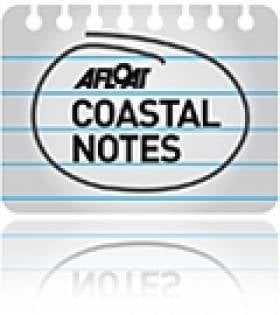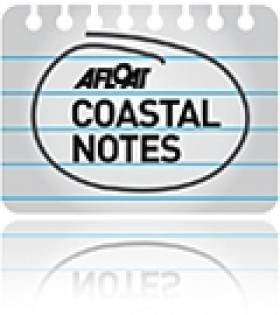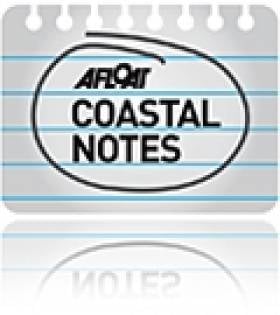Displaying items by tag: beaches
RNLI Lifeguards Providing Easter Beach Cover In Northern Ireland
#WaterSafety - RNLI lifeguards will provide Easter cover for the first time on three of the most popular family beaches in Northern Ireland.
For the second year running, lifeguards will be patrolling Tyrella Beach in Co Down, and for the third year will be ready to offer safety advice and assistance on Benone Strand on the north coast.
In addition this Easter, lifeguards will also be patrolling Portstewart Strand, Portrush East Strand and Whiterocks beach, all of which are located along the Causeway Coast.
The cover commences on Good Friday 29 March and will run throughout Easter week until Sunday 7 April.
Despite the unseasonal weather, the charity’s highly trained lifeguards will be ready to assist visitors who brave the elements and take a trip to the seaside over the Easter break.
The lifeguards will operate on Benone, Portstewart, East Strand and Whiterocks from 11am to 7pm, and from 10am to 6pm on Tyrella Beach.
RNLI regional lifeguard manager Mike Grocott said: "Our highly trained lifeguards spot potential dangers before they develop, and are on hand to give appropriate safety advice and respond immediately if anyone gets into difficulty.
"Because our lifeguards work closely alongside our volunteer lifeboat crews, it means the RNLI offers beachgoers and water-users a seamless rescue service from beach to open sea."
The RNLI started providing lifeguard cover on Northern Ireland beaches in 2011, working with Coleraine Borough Council, Limavady Borough Council and the National Trust - and going into its third season now has lifeguards on 10 beaches.
Last year, lifeguards in the areas of Newry and Mourne District Council, Down District Council and the Causeway Coast together responded to 158 incidents and assisted 176 people.
Speaking ahead of the Easter holidays, RNLI lifeguard supervisor Tim Doran encouraged anyone planning a trip to the beach to keep safe.
"Always swim at a lifeguarded beach. Never use inflatables in strong winds or rough seas and check tide times before you go," he said. "If you get into trouble, stick your hand in the air and shout for help and if you see someone else in trouble, tell a lifeguard. If you can’t see a lifeguard, call 999 or 112 and ask for the coastguard."
The RNLI is also encouraging anyone planning a trip to the seaside this year to download its ‘Beach Finder’ mobile app.
The handy app makes it easy to find the nearest lifeguarded beach, and gives users a wealth of beach safety information at their fingertips.
Real-time weather information and a five-day forecast for each location is also included with the app – ideal for anyone wondering whether they’ll need to pack their suncream or waterproofs!
The app is available to download free of charge on both Android and iOS devices from www.rnli.org/beach.
Cork Beach Bathing Ban Lifted as E.coli Levels Drop 'Significantly'
#COASTAL NOTES - The bathing ban imposed last week on seven Cork coastal beaches has been lifted, according to RTÉ News.
As previously reported on Afloat.ie, the seven beaches had been closed to swimming over concerns at elevated E.coli levels in the water, resulting from water runoff after the recent heavy rainfall in the county.
Cork County Council took the decision to lift restrictions after tests this week showed E.coli levels had "significantly descreaed" below the EU mandatory safety level.
The seven affected beaches included three in the Youghal area. Redbarn at Youghal joins Garretsown near Kinsale and Garryvoe in the beaches that can fly their Blue Flags once more.
Cork Beaches Closed to Bathing Over Elevated E.coli Levels
#COASTAL NOTES - Some of Cork's most popular beaches have been closed to bathers over concerns at elevated levels of E.coli in the water.
According to The Irish Times, the bathing ban affects the blue flag beaches at Garretstown near Kinsale, Redbarn at Youghal and Garryvoe, while other beaches affected include Coolmaine near Kilbittain, Oysterhaven and two other stretches in Youghal.
Water runoff from the heavy rainfall experienced in the county earlier in the summer has been blamed for the increase of the dangerous bacteria above mandatory EU safety levels.
This is similar to that which caused the closure of bathing and surfing spots on the Clare coast last month, as previously reported on Afloat.ie.
The Irish Examiner explains that E.coli is commonly found in slurry, much of which has been washed from farms into the sea as a result of the record rains of recent weeks.
The situation has been compounded by southerly winds which have prevented the dispersal of the polluted water from the coastline.
Cork County Council has contacted the HSE and the Environmental Protection Agency (EPA) and will carry out further inspections of water quality tomorrow.
Meanwhile, Cork County Mayor and Youghal Councillor Barbara Murray has called for improvements to the water sampling process.
“You don’t just do this on a Monday and decide you are not going to do it again until the following Monday," she said. “So I would be suggesting that it would be done on a more regular basis and that the results be brought in as soon as possible."
The Irish Times has more on the story HERE.
#DALKEY ISLAND PROSPECT – The Green Party has called on the Minister for the Environment ,Phil Hogan, to hold a public enquiry in to the application to grant a license to Providence Resources' PLC to carry out a site survey and drill an exploration well in the Dalkey Island prospect on the Kish Bank basin.
Speaking yesterday Green Party spokesperson on Planning, Tom Kivlehan, said: "There are huge concerns among the people of Dublin about the proposed application and they feel that the process does not afford them the opportunity to have their questions and worries answered.
A public enquiry could address their fears. We have seen the consequences of poor public consultation in respect of the Corrib Gas Field and we should learn the lessons from it".
Dublin Bay is an environmentally sensitive area and a tremendous amenity for the population of Dublin, Famous for its Dublin bay prawns, it has a special area of conservation, bird sanctuaries, seal and dolphin populations, fishing grounds, beaches and sailing facilities.
He added: "It also is home to Ireland's largest port and is a busy shipping hub. Any new proposed development that can cause a potential risk to the life of Dublin Bay must be open public scrutiny and be fully transparent".
Under the Foreshore Act 1933 (Section 3, paragraph 9) the Minister has the power to call a public inquiry and "we now ask him on behalf of the people of Dublin to do so as quickly as possible".
As previously reported on Afloat.ie, a public meeting is to be held by Dalkey Community Council next week to discuss the proposed exploratory operation by Providence Resources.
- Green Party
- Coastal Notes
- Dalkey Island Prospect
- Kish Bank Basin
- Providence Resources
- Minister Phil Hogan
- Department of Environment
- Dublin Bay
- Dublin Bay Oil exploration
- Dalkey Community Council
- Corrib Gas field
- Bird Santuaries
- Seal and dolphins
- fishing grounds
- beaches
- Dublin Bay prawns
- Dublin Port
- Dublin port shipping hub
Ireland's Bathing Spots Among Cleanest in Europe
Ireland has ranked fifth in a new Europe-wide report on bathing water quality - but some beaches in Northern Ireland are falling short of strict EU standards.
MEP Jim Higgins welcomed the results of the annual Bathing Water Report for 2010, saying: "Ireland's scenic attributes are a primary reason for attracting tourists and it is essential that our coastal and inland bathing sites are also enticing."
Ireland has moved up five places from its overall rank of 10th in 2009, with 90.1% of all bathing water sites meeting the EU's Blue Flag guidelines for water quality at beaches and swimming spots.
However, the Daily Telegraph reports that a number of beaches in Northern Ireland and other parts of the UK were judged to be 'poor'.
Beaches at Newcastle and Ballyholme in the North are among 16 across the UK that did not pass the EU's strict checks for Blue Flags.
The 2010 report ranks Cyprus as the cleanest bathing spot in Europe, with 100% of sites passing EU insspection. It was closely followed by Croatia with 97.3%, Malta at 95.4% and Greece at 94.2%.
Dun Laoghaire Rathdown Seeks Summer Lifeguards
Dun Laoghaire Rathdown County Council is now recruiting beach lifeguards for the summer season.
Applicants must be 17 years old on 1 April 2011, and hold a valid Beach Lifesaving Award/Qualification from the Irish Water Safety authority, Royal Lifesaving Society or equivalent which is no more than two years old. They must also have a knowledge of cardio pulmonary resuscitation.
Desired attributes include an understanding of local effects on beaches, such as rip currents and undertow, and a knowledge of water sports enjoyed by the public.
Interviews will be followed by a swimming test, and successful candidates will be subject to Garda vetting.
Application forms are available from the DLR County Council Office, Dundrum Office Park, Main Street, Dundrum, Dublin 14 or from the information desk at County Hall, Marine Road, Dun Laoghaire, Co Dublin.
The closing date for applications is 4.30pm on Thursday 31 March 2011.
For more details can be found on the Dun Laoghaire Rathdown County Council website.

































































